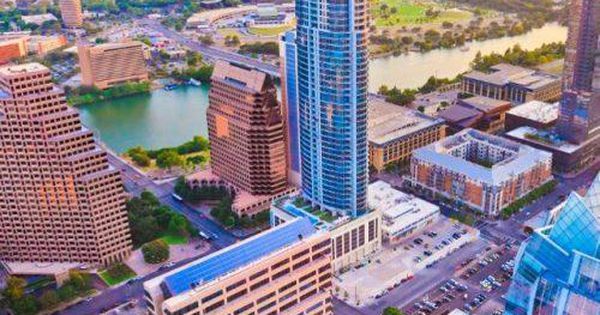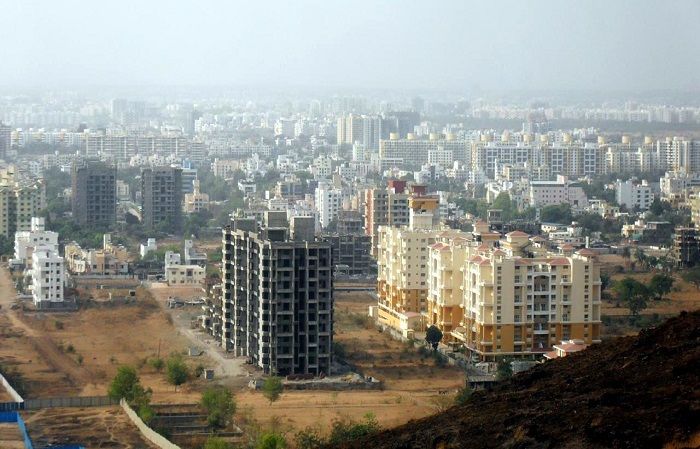The pursuit of wealth accumulation and passive income has long drawn investors to the tangible allure of real estate. More than just physical structures, properties represent a dynamic asset class, constantly influenced by economic shifts, demographic trends, and technological advancements. While traditional wisdom often emphasizes ‘location, location, location,’ astute investors know that identifying true investment hotspots requires a nuanced understanding of emerging trends, market fundamentals, and future growth potential. This is the art of unearthing opportunities where capital gains and robust rental yields converge, moving beyond conventional wisdom to reveal the genuine epicenters of real estate value.
Real Estate Investment Landscape
To navigate the complex world of real estate and pinpoint investment hotspots, it’s crucial to first understand the underlying forces that shape property markets and the various avenues for participation.
A. The Dual Pillars of Real Estate Value
Real estate derives its investment appeal primarily from two fundamental aspects:
- Capital Appreciation: This refers to the increase in a property’s value over time. It’s influenced by factors like supply and demand dynamics, economic growth, inflation, infrastructure development, and desirability of the location. Investors aim to buy low and sell high.
- Rental Yield (Income Generation): This is the income generated from a property, typically through rent, relative to its purchase price. It provides a consistent cash flow stream, crucial for passive income strategies. Gross rental yield is calculated as annual rental income divided by property purchase price, while net yield considers expenses.
Balancing these two pillars is key to a diversified and resilient real estate portfolio. Some markets offer high appreciation potential with lower initial yields, while others provide stable, higher yields with more modest appreciation.
B. Key Economic Drivers of Property Markets
Real estate is intrinsically tied to broader economic health. Several macroeconomic factors exert significant influence:
- Interest Rates: Lower interest rates make borrowing cheaper, increasing affordability for buyers and stimulating demand, which typically drives up property prices. Conversely, higher rates can cool the market.
- Economic Growth (GDP): A robust economy, indicated by strong Gross Domestic Product (GDP) growth, generally leads to job creation, higher wages, and increased consumer confidence, all of which fuel housing demand and commercial real estate needs.
- Inflation: Real estate is often considered a hedge against inflation. As the cost of goods and services rises, so too do property values and rents, preserving purchasing power.
- Employment Rates and Job Growth: Areas with strong job markets and diverse industries attract more people, leading to increased demand for both residential and commercial properties. Tech hubs, for instance, often see booming real estate markets.
- Supply and Demand Dynamics: The fundamental interplay between the availability of properties (supply) and the number of willing buyers/renters (demand) is the primary determinant of price movements. Scarcity often drives value.
- Government Policies and Regulations: Tax incentives, zoning laws, urban planning initiatives, infrastructure spending, and rent control policies can significantly impact property values and investment attractiveness.
C. Diverse Avenues for Real Estate Investment
Investors can engage with real estate through various direct and indirect channels:
- Residential Properties: Single-family homes, multi-family units (duplexes, apartment buildings), condominiums, and townhouses. These typically generate income through rent and appreciate over time.
- Commercial Properties: Office buildings, retail spaces, industrial warehouses, hospitality (hotels), and specialized properties (healthcare facilities, data centers). Income streams are often longer-term leases with businesses.
- Real Estate Investment Trusts (REITs): Companies that own, operate, or finance income-producing real estate across various property types. REITs trade like stocks on major exchanges, offering liquidity and diversification without direct property ownership.
- Real Estate Crowdfunding: Platforms that allow multiple investors to pool funds to invest in larger real estate projects (debt or equity), democratizing access to institutional-grade properties.
- Land Development: Investing in undeveloped land with the intention of developing it for residential, commercial, or industrial use, often involving significant capital and regulatory hurdles but high potential returns.
- Fix-and-Flip: Purchasing undervalued properties, renovating them, and selling them quickly for a profit. This strategy requires strong market knowledge, renovation expertise, and efficient project management.
Core Principles for Identifying Real Estate Investment Hotspots
Uncovering genuine real estate investment hotspots requires more than just anecdotal evidence. It demands a systematic approach grounded in data, foresight, and a deep understanding of urban dynamics.
A. Demographics: The People Factor
Demographic trends are perhaps the most powerful long-term drivers of real estate value. Where people move, jobs follow, and where jobs go, property values tend to rise.
- Population Growth: Areas experiencing consistent population growth, particularly among younger demographics (millennials, Gen Z), signal future demand for housing and services. These groups are often renters first, then first-time homebuyers.
- Migration Patterns (Inflow): Identifying cities or regions with strong net migration (more people moving in than out) is a key indicator. This often correlates with economic opportunities and quality of life.
- Household Formation: An increase in household formation (people moving out of parental homes, divorce rates, new family structures) drives demand for independent living units.
- Age Cohorts: Understanding the age distribution can reveal demand for specific property types (e.g., young professionals for urban apartments, families for suburban homes, retirees for senior living communities).
- Income Levels and Growth: Areas with rising median household incomes indicate increasing purchasing power and affordability for higher rents or home prices.
B. Economic Fundamentals: Jobs and Diversification
A healthy and growing local economy is the bedrock of a sustainable real estate hotspot.
- Job Market Strength: Look for cities with robust, consistent job creation, low unemployment rates, and a high ratio of job openings to job seekers.
- Industry Diversification: Markets reliant on a single industry are riskier. Hotspots often have diversified economies, making them more resilient to downturns in any one sector (e.g., tech, healthcare, education, logistics, manufacturing).
- Presence of Major Employers: The establishment or expansion of large corporations, particularly in growing sectors, can act as a magnet for talent and drive housing demand.
- Wage Growth: Rising wages empower residents to afford higher rents and property prices, fueling market appreciation.
- Venture Capital Funding: For tech-centric markets, a vibrant venture capital ecosystem indicates innovation, startup growth, and future job creation.
C. Infrastructure Development: Connectivity and Accessibility
Investment in infrastructure is a powerful catalyst for real estate value, improving connectivity, accessibility, and quality of life.
- Transportation Upgrades: New highways, public transit lines (subways, light rail), airport expansions, and improved road networks reduce commute times and increase the desirability of surrounding areas.
- Utilities and Connectivity: Availability of reliable utilities (water, electricity) and high-speed internet (fiber optics, 5G) is fundamental for modern living and business.
- Education and Healthcare Facilities: Proximity to reputable universities, colleges, and top-tier hospitals or medical centers enhances an area’s appeal and stability.
- Recreational and Cultural Amenities: Parks, entertainment venues, shopping districts, restaurants, and cultural institutions contribute to a vibrant community, attracting residents and businesses.
- Sustainability Initiatives: Investment in green infrastructure, renewable energy projects, and sustainable urban planning can boost long-term appeal and value, particularly for eco-conscious buyers.
D. Affordability and Supply Dynamics
While strong demand is crucial, it must be balanced against affordability and the existing supply.
- Affordability Index: Assess the ratio of median home prices to median household incomes. Hotspots often have a healthy balance, indicating room for growth without being overly speculative or out of reach for the average buyer.
- Housing Supply Constraints: Markets with limited developable land, restrictive zoning laws, or slow permitting processes tend to have constrained supply, which can drive up prices faster in response to demand.
- Vacancy Rates (Residential & Commercial): Low vacancy rates indicate strong demand relative to supply, signaling a landlord’s market and potential for rent increases. High vacancy rates suggest oversupply.
- Building Permits and Construction Pipeline: Monitor the number of new building permits issued and the pipeline of ongoing construction projects. A high volume of new construction might indicate future oversupply or that the market is already responding to demand.
E. Quality of Life and Livability
Beyond economics, intangible factors related to quality of life play a significant role in attracting residents and, consequently, investment.
- Safety and Crime Rates: Low crime rates are fundamental for desirability and a sense of community well-being.
- School Districts: Access to high-performing public and private schools is a major draw for families, influencing residential property values significantly.
- Environmental Quality: Clean air and water, access to green spaces, and effective waste management contribute to a healthy living environment.
- Cultural Vibrancy: A thriving arts scene, diverse culinary options, and community events enhance the livability and attractiveness of an area.
- Walkability and Bikeability: Urban areas with good walkability and bikeability scores are increasingly desired by younger generations and those seeking a more sustainable lifestyle.
Advanced Strategies and Considerations
Identifying true investment hotspots goes beyond superficial analysis, requiring a deeper dive into specific market dynamics and forward-looking trends.
A. Data-Driven Market Analysis
Leverage technology and data analytics to gain a competitive edge in market research.
- Big Data Analytics: Utilize demographic data, job growth statistics, rental trends, sales volume, and economic indicators from various sources (government agencies, real estate analytics firms).
- Geospatial Analysis: Use mapping tools and GIS (Geographic Information Systems) to visualize trends, identify promising neighborhoods, and analyze proximity to amenities, transport, and job centers.
- Predictive Modeling: Employ machine learning algorithms to forecast future market movements, rental yields, and appreciation rates based on historical data and current trends.
- Sentiment Analysis: Monitor social media, news, and forums for public sentiment regarding specific areas or development projects, which can indicate future desirability.
B. The Impact of Remote Work and Hybrid Models
The COVID-19 pandemic significantly accelerated the shift towards remote and hybrid work, reshaping demand for both residential and commercial real estate.
- Suburban and Secondary City Growth: Many individuals are no longer tethered to major urban centers, leading to increased demand in more affordable suburban areas or smaller, amenity-rich secondary cities. This decentralization creates new residential hotspots.
- Re-evaluation of Office Space: Commercial real estate, particularly traditional office spaces, faces significant disruption. Demand might shift towards flexible co-working spaces, smaller satellite offices, or highly collaborative hubs, rather than large, fixed HQs. Investors need to be discerning about office property types.
- Growth of Industrial and Logistics Real Estate: The boom in e-commerce, fueled by remote work patterns, has massively increased demand for warehouses, distribution centers, and last-mile delivery hubs, making industrial real estate a robust hotspot.
- Digital Nomads and Short-Term Rentals: The rise of digital nomads impacts residential rental markets, potentially creating opportunities for short-term rental investments in desirable, affordable locations.
C. Niche Property Types and Emerging Sectors
Beyond traditional residential and commercial, specialized property types are emerging as strong investment hotspots.
- Data Centers: The exponential growth of cloud computing, AI, and digital services drives relentless demand for secure, high-power, and robust data center facilities. This is a highly specialized but high-growth sector.
- Life Sciences and Biotech Labs: With massive investments in healthcare innovation, specialized lab spaces, research facilities, and biomedical manufacturing hubs are experiencing significant demand, particularly around university research parks.
- Build-to-Rent (BTR) Communities: As homeownership becomes challenging for many, purpose-built rental communities (often single-family homes managed professionally) are gaining traction, offering stable yields and meeting a growing housing need.
- Student Housing: Proximity to major universities often creates stable demand for student housing, offering predictable rental income streams.
- Self-Storage Facilities: Growing populations and increasing urbanization lead to demand for self-storage units, often a resilient asset class during economic fluctuations.
- Senior Living Facilities: Aging populations in many countries are driving demand for specialized senior living and care facilities, presenting long-term investment opportunities.
D. The Role of ESG (Environmental, Social, Governance) in Real Estate
ESG factors are no longer just buzzwords; they are increasingly influencing investment decisions and property values.
- Green Buildings: Properties with LEED certification, energy-efficient designs, and sustainable materials often command higher rents and sale prices, attract eco-conscious tenants, and may qualify for tax incentives.
- Social Impact: Developments that contribute positively to community well-being, provide affordable housing, or support local businesses can attract investment and enhance long-term value, aligning with social responsibility goals.
- Governance and Transparency: Markets with strong regulatory frameworks, transparent property rights, and low corruption are more attractive to institutional investors, reducing risk.
- Climate Change Resilience: Properties designed to withstand the impacts of climate change (e.g., flood-resistant, heat-resilient) will command a premium and be more insurable in the long run.
E. Global vs. Local Dynamics
While global trends influence markets, real estate is fundamentally local.
- Micro-Market Analysis: Drilling down to specific neighborhoods, blocks, or even individual streets can reveal unique dynamics and opportunities not visible at the city or regional level. Proximity to specific schools, parks, or development projects matters.
- Hyperlocal Hotspots: Within a generally strong city, particular submarkets or pockets might outperform others due to unique amenities, upcoming developments, or community initiatives.
- Regulatory Nuances: Local zoning laws, building codes, and community resistance to development can significantly impact supply and the feasibility of projects, requiring careful local due diligence.
Challenges and Risks in Real Estate Hotspot Investing
While the allure of high returns is strong, investing in real estate hotspots comes with its own set of challenges and risks that must be carefully managed.
A. Market Volatility and Cyclical Nature
Real estate markets are inherently cyclical and subject to volatility. Economic downturns, interest rate hikes, or oversupply can lead to corrections or prolonged slumps, impacting property values and rental income. Investing at the peak of a boom can lead to significant losses if a downturn follows.
B. Interest Rate Sensitivity
Real estate is highly sensitive to interest rate changes. Rising rates increase borrowing costs, reduce affordability for buyers, and can put downward pressure on property values. Investors relying on leverage (mortgages) are particularly vulnerable to rate fluctuations.
C. Liquidity Constraints
Unlike stocks or bonds, real estate is a highly illiquid asset. Selling a property can take months, involving complex transactions, legal fees, and market conditions. This lack of quick access to capital can be a challenge if funds are needed urgently.
D. Regulatory and Legal Risks
Property investments are subject to a complex web of government regulations, zoning laws, building codes, and landlord-tenant laws. Changes in these regulations, unexpected permitting delays, or legal disputes can significantly impact a project’s feasibility, timeline, and profitability. Political instability in some regions can also be a major risk.
E. High Transaction Costs and Ongoing Expenses
Real estate transactions involve significant upfront costs (e.g., agent commissions, legal fees, transfer taxes, loan origination fees). Beyond purchase, properties incur ongoing expenses such as property taxes, insurance, maintenance, repairs, and property management fees. These costs can erode rental yields and capital gains if not carefully managed.
F. Property-Specific Risks (Micro-level)
Even within a strong hotspot, individual properties carry specific risks:
- Physical Deterioration: Wear and tear, natural disasters, or unexpected structural issues can lead to significant repair costs.
- Tenant Issues: Vacancies, non-paying tenants, or property damage caused by tenants can impact rental income and require costly legal action.
- Location-Specific Problems: Localized crime spikes, environmental hazards (e.g., flood plains, pollution), or undesirable neighboring developments can negatively impact property value, even in an otherwise strong area.
G. Competition and Overvaluation in Hot Markets
Once a market is identified as a ‘hotspot,’ it often attracts significant capital, leading to increased competition, speculative buying, and potential overvaluation. Entering a market at its peak can reduce future appreciation potential and increase risk. Due diligence is crucial to avoid chasing bubbles.
H. Management Intensity (for Direct Ownership)
Direct property ownership, especially for rental properties, can be management-intensive. This involves dealing with tenants, maintenance, repairs, marketing vacancies, and legal compliance. While property managers can alleviate some of this burden, they add to expenses. This contrasts with more passive investments like REITs.
Best Practices for Investing in Real Estate Hotspots
To maximize returns and mitigate risks in the pursuit of real estate investment hotspots, astute investors should adhere to a disciplined, data-driven, and long-term oriented approach.
A. Conduct Thorough Due Diligence and Research
Never rely solely on headlines or anecdotal evidence. Perform meticulous due diligence and comprehensive research. This involves:
- In-depth Market Analysis: Study demographic trends, job growth, economic forecasts, supply/demand ratios, and vacancy rates at a granular, local level.
- Property-Specific Analysis: Conduct thorough inspections, review financial statements (for income properties), assess comparable sales, and understand all associated costs (acquisition, holding, renovation, selling).
- Regulatory Review: Understand local zoning laws, building codes, landlord-tenant regulations, and any potential development restrictions.
- Risk Assessment: Identify and quantify potential risks (e.g., flood zones, crime rates, local political changes).
B. Focus on Long-Term Growth Fundamentals
While ‘fix-and-flip’ offers quick returns, the most sustainable and less risky approach to hotspots is to focus on long-term growth fundamentals. Look for markets with:
- Sustainable Job Creation: Driven by diversified industries, particularly in high-growth sectors (tech, healthcare, logistics).
- Strong Demographic Inflows: Consistent population growth, especially among key age cohorts (young professionals, families).
- Planned Infrastructure Investments: Upcoming transportation projects, educational facilities, or urban revitalization initiatives that will enhance future desirability.
- Affordability with Room for Appreciation: Markets that are not yet overheated but show clear indicators of future demand and value growth.
C. Leverage Technology and Data Analytics
Utilize modern tools to gain a competitive edge in identifying and analyzing hotspots.
- Real Estate Analytics Platforms: Subscribe to services that provide detailed market data, trend analysis, and predictive insights.
- Mapping and GIS Tools: Use geographic information systems to visualize data, analyze proximity, and identify micro-market opportunities.
- PropTech Solutions: Explore property technology solutions for everything from lead generation and property management to virtual tours and automated valuation models.
- AI-Powered Insights: Some advanced platforms are beginning to offer AI-driven forecasts and anomaly detection for market trends.
D. Diversify Your Portfolio Strategically
Avoid putting all your eggs in one basket. Diversify your real estate portfolio across:
- Property Types: Mix residential with commercial, or explore niche sectors like industrial, self-storage, or senior living.
- Geographical Locations: Spread investments across different cities or regions to mitigate localized downturns.
- Investment Strategies: Combine income-generating properties with those primarily focused on capital appreciation.
- Investment Vehicles: Consider a mix of direct ownership, REITs, and potentially crowdfunding for broader exposure.
E. Understand the Local Market and Network
Real estate is inherently local. Spend time in potential hotspots to gain a qualitative understanding.
- Walk the Neighborhoods: Get a feel for the local vibe, amenities, and signs of gentrification or decline.
- Network with Local Experts: Engage with local real estate agents, brokers, developers, property managers, and community leaders. Their on-the-ground knowledge is invaluable.
- Monitor Local News: Stay updated on local economic developments, zoning changes, and community sentiments.
F. Plan for Property Management and Operational Costs
For direct property ownership, have a clear plan for property management.
- Self-Management: Be prepared for the time commitment and responsibilities of finding tenants, handling maintenance, and managing finances.
- Professional Property Managers: Budget for property management fees (typically 8-12% of gross rents) if you prefer a more passive approach, especially for out-of-state investments.
- Factor in All Expenses: Accurately calculate property taxes, insurance, maintenance reserves, potential vacancies, and capital expenditure for major repairs when assessing potential returns.
G. Develop an Exit Strategy
Before you even invest, have a clear exit strategy.
- When to Sell: Define the conditions under which you would consider selling (e.g., reaching a target appreciation, significant market changes, personal financial goals).
- Market Conditions: Understand the typical selling cycles and market liquidity in the area.
- Tax Implications: Consult with a tax advisor to understand capital gains taxes and other tax implications of selling.
The Future Trajectory of Real Estate Investment Hotspots
The landscape of real estate investment is constantly evolving, influenced by global megatrends and technological disruption. The future promises new types of hotspots and innovative approaches to identifying them.
A. Climate Resilience and Green Real Estate as Hotbeds
As climate change impacts become more pronounced, climate resilience will increasingly drive investment decisions. Hotspots will include areas with:
- Lower Climate Risk: Locations naturally less susceptible to extreme weather events, rising sea levels, or water scarcity.
- Green Infrastructure Investment: Cities investing in sustainable urban planning, renewable energy infrastructure, and climate adaptation technologies.
- Sustainable Building Premium: Properties built with eco-friendly materials, energy-efficient systems, and smart environmental controls will command a premium and be more attractive to both tenants and buyers. This segment will see significant capital flow.
B. Tech-Driven Hyperlocal Spotting
The rise of AI and big data will enable unprecedented precision in identifying hyperlocal hotspots.
- Predictive AI Models: AI algorithms will analyze vast, diverse datasets (social media sentiment, traffic patterns, drone imagery, granular demographic shifts) to predict micro-market growth and identify specific blocks or development corridors likely to outperform.
- Geospatial Intelligence: Advanced geospatial analytics will integrate layers of urban data to reveal underserved areas, emerging amenity clusters, and optimal development sites with granular accuracy.
- Digital Twin Integration: Digital Twins of urban areas will allow investors and developers to simulate the impact of new projects or infrastructure changes on property values and livability before any ground is broken.
C. The Blurring Lines: Live-Work-Play Ecosystems
The traditional separation of residential, commercial, and retail will continue to blur, leading to integrated live-work-play ecosystems as prime hotspots.
- Mixed-Use Developments: Projects that combine housing, office space, retail, and entertainment within a walkable radius will become highly desirable.
- ’15-Minute City’ Concept: Urban areas designed so that most daily necessities and services are accessible within a 15-minute walk or bike ride will emerge as premium residential and commercial zones.
- Decentralized Hubs: As remote work normalizes, smaller, self-sufficient urban hubs within or around larger metropolitan areas will become attractive, reducing reliance on long commutes to central business districts.
D. The Rise of Niche and Alternative Assets
Investment capital will increasingly flow into niche and alternative real estate assets driven by demographic shifts and technological demands.
- Vertical Farms and Controlled Environment Agriculture (CEA): Urban farming and high-tech agricultural facilities will gain traction due to food security concerns and demand for local produce.
- Life Sciences Hubs (Continued Growth): Driven by biotech, pharma, and healthcare innovation, specialized lab and R&D facilities will remain critical hotspots.
- Digital Infrastructure Assets: Beyond data centers, investments in cell towers, fiber optic networks, and other digital infrastructure will be key as the world becomes more connected.
- Student Housing and Senior Living (Demographic Drivers): These sectors will continue to be strong investment plays due to predictable demographic trends.
E. Fractional Ownership and Tokenization
Technological advancements like blockchain and new investment platforms will democratize access to real estate investment, potentially creating new types of ‘hotspots’ in the investment vehicle itself.
- Fractional Ownership Platforms: Making high-value properties accessible to smaller investors by allowing them to buy ‘fractions’ of a property.
- Real Estate Tokenization: Using blockchain to represent ownership of real estate assets as digital tokens, potentially increasing liquidity, transparency, and reducing transaction costs, opening up new global investment opportunities.
Conclusion
The world of real estate investment remains a compelling avenue for wealth creation, yet its dynamics are more intricate and interconnected than ever before. Identifying true investment hotspots is no longer a simple matter of conventional wisdom; it’s a sophisticated art and science that demands a deep understanding of evolving demographics, robust economic fundamentals, strategic infrastructure development, and nuanced supply-demand dynamics.
As we navigate a future shaped by remote work, climate change, and hyper-connectivity, the traditional definitions of property value are being rewritten. The next wave of hotspots will emerge in areas demonstrating strong resilience, embracing sustainability, leveraging advanced technology, and fostering vibrant, integrated communities. For astute investors, the ability to combine meticulous data-driven analysis with on-the-ground insights, while also adapting to emerging trends and carefully managing inherent risks, will be the definitive blueprint for success. The opportunities are continually revealing themselves, for those ready to look beyond the obvious and unearth where the true value lies, now and in the years to come.










